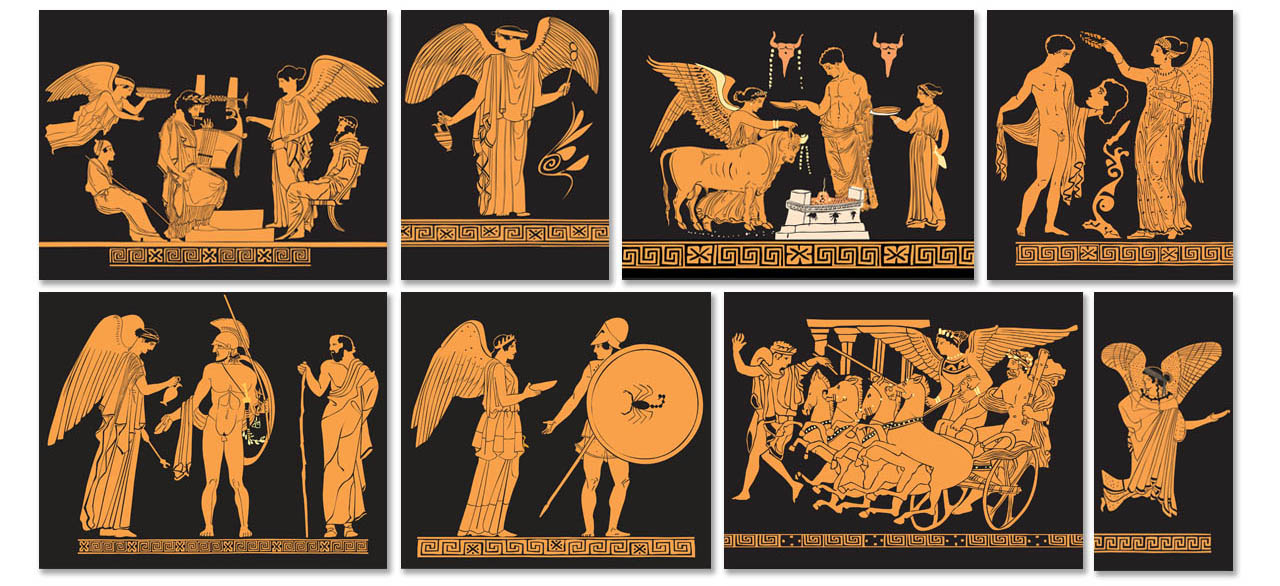Nike in vase painting , Nike is particularly popular. She is almost always shown with wings – her defining attribute – and in a stance or position that communicates her energetic and ephemeral nature: running or flying.
In the Archaic period, she shows up as a messenger and is often indistinguishable from other winged heralds such as Iris; like Hermes she will sometimes carry the caduceus in early painting. In the fifth century, she is very fashionable and is often shown dedicating armor and weapons, pouring libations over altars, or bestowing garlands on athletes and warriors; common attributes during this time are the phiale (offering cup) and oinochoe (small jug).
She can also sometimes appear on vases a charioteer in more complex figural schemes, usually for Athena, for whom she is a common handmaiden. Her popularity in Athenian painting peaks during the later part of the fifth century, specifically during the Peloponnesian War during which time she is invoked with particular fervor. For a wore torn polis, there could be no more important goddess . . . . 
Nike in vase painting
Contacts
John Goodinson Artist/designer/illustrator
Christina Jansen Photographer
Phenomenists Internet Agency/ISP
The British Museum London England
The Acropolis Museum Athens Greece
Maxon Software Developer
Our affiliate partner
Theran Press is the academic publishing imprint of Silver Goat Media. Theran is dedicated to authentic partnerships with its academic associates, to the high quality design of scholarly books, and to elite standards of peer review. Theran seeks to liberate intellectuals from the confines of traditional academic publishing. Theran authors are authorities and revolutionaries in their respective fields.
Theran encourages new models for generating and distributing art, science, and knowledge. For our creatives. For our communities. For our world.
Our Hosting Partner
Phenomenists Internet (ISP) was founded in 2000, to meet a growing demand for cost-effective and
reactive internet services, Phenomenists have provided the hosting services and support for all our online projects since 2008. John Goodinson is a member of the creative team and has worked with Phenomenists since 2008.
